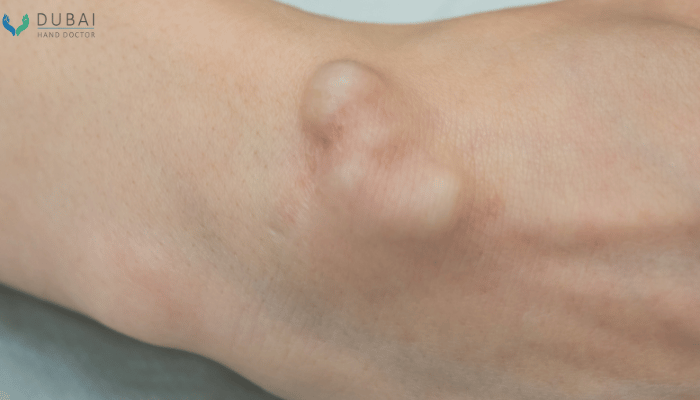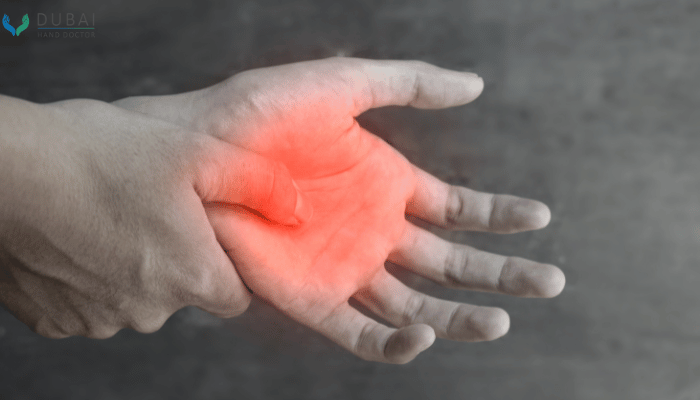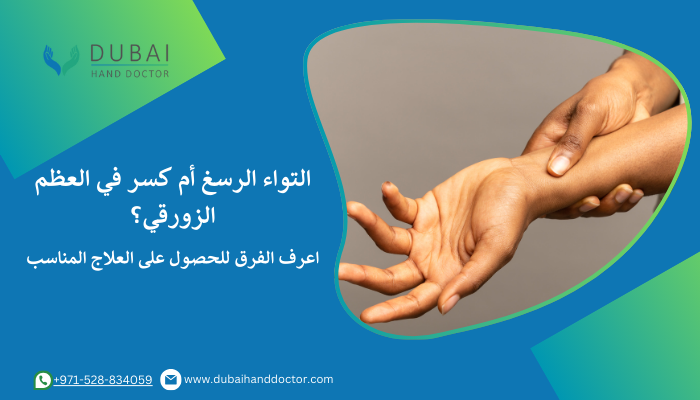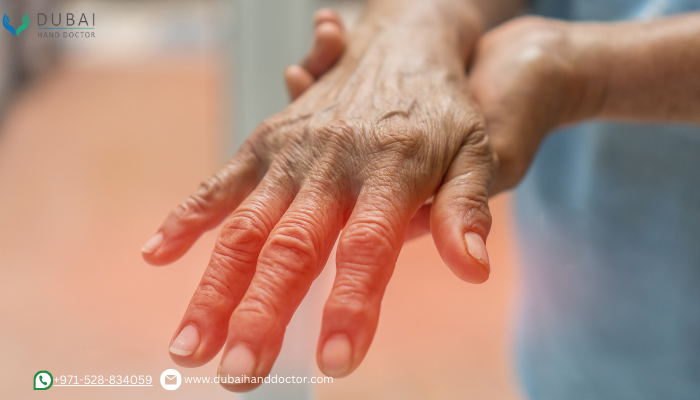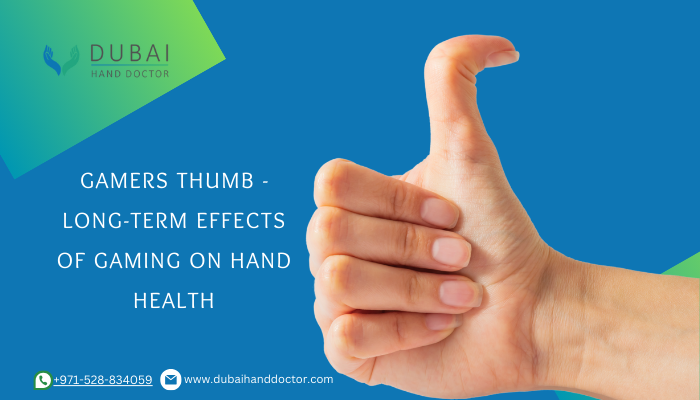Understanding and Managing Dupuytren’s Disease: Insights from Dr. Ehab
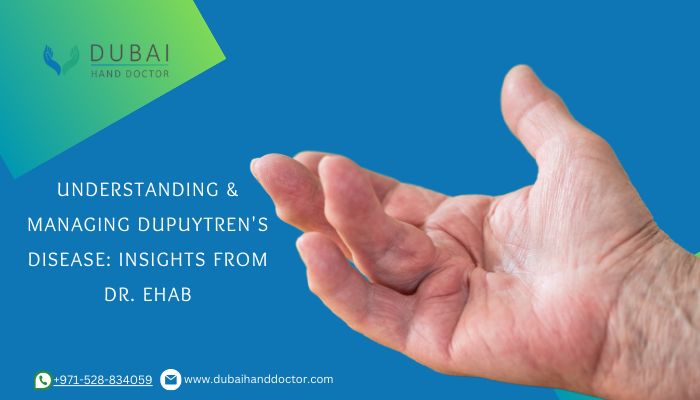
Do you experience a thickening or tightness in the palm of your hand, making it difficult to straighten your fingers fully?
This could be Dupuytren’s contracture, a progressive condition that can limit hand function. While it is not a life-threatening condition, Dupuytren’s contracture can significantly impact your daily activities and quality of life.
In this blog, we’ll delve into Dupuytren’s disease alongside Dr. Ehab Aldyami, a leading expert in hand surgery. With Dr. Ehab’s wealth of experience and unwavering commitment to patient care, you’ll gain valuable insights into understanding and effectively managing Dupuytren’s disease.
Dupuytren's Contracture: An Overview
Dupuytren’s contracture is a progressive condition that impacts the palmar fascia, which is the fibrous layer of tissue beneath the skin and above the tendons, blood vessels, nerves, and bones in the palm and fingers.
It typically causes the fingers to bend toward the palm and can lead to difficulty straightening them. Over time, a thickening of tissue forms nodules or cords under the skin, which can eventually pull the fingers into a bent position.
Symptoms of Dupuytren's Disease
- A hard lump in the connective tissue
- Stiffness in the finger joints
- Difficulty straightening the finger(s)
- Inability to rest one’s hand flat on a table
- Increased pressure in the fingers as they bend downward
- A lack of ability to grasp large objects
- Having trouble getting your hands into your pockets
Dupuytren's Disease Causes and Risk Factors
The specific cause of Dupuytren’s disease remains unclear, but certain factors may elevate your risk, including:
- Being over the age of 40.
- Male gender, as the condition is more prevalent and severe in men compared to women.
- Taking specific medications like antiepileptics.
- Previous hand injuries.
- Family history of the condition, particularly if a parent or close relative has experienced it.
- Ethnicity, with individuals of Northern European or Scandinavian ancestry.
- Presence of certain medical conditions like diabetes, high cholesterol, or thyroid disorders.
Diagnosis of Dupuytren's Disease
During your consultation with Dr. Ehab, he will examine your hand. He will assess the flexibility and sensation in your thumb and fingers, as well as evaluate your grip and pinch strength.
Dr. Ehab will carefully measure and record the nodules and bands location on your palm. Using specialized tools, he will quantify the degree of curling or contraction in your fingers. Additionally, Dr. Ehab may assess the range of motion in your fingers.
These measurements serve as a reference point for tracking the disease progression and evaluating the effectiveness of treatment.
Dupuytren's Disease Treatment
When comes to Dupuytren’s Disease treatment, Dr. Ehab will decide the same according to the acuteness of your symptoms in various stages.
Non-Surgical Dupuytren’s Disease Treatment
- Stretching exercises or physical therapy.
- Bracing or splinting to restore your fingers’ normal range of motion.
Dupuytren’s Contracture Surgery
For severe cases of Dupuytren’s contracture, surgery might be necessary to fix the finger-bending issue.
Surgery is more effective and longer-lasting results than non surgical treatment.
In severe cases, surgeons will remove all tissue that is likely to be affected by Dupuytren contracture, including the attached skin. In these cases, they’ll use a skin graft to cover the wound. This surgery is the most intense and takes the longest time to recover from.
It’s important to note that even with treatment, the finger-bending problem can come back over time.
Contact Dr. Ehab Bassim Aldlyami for Dupuytren's Disease Treatment in Dubai
Managing Dupuytren’s disease are crucial for maintaining hand function and quality of life.
With Dr. Ehab Bassim Aldlyami’s extensive experience spanning over 25 years in hand surgeries, patients can trust in his specialized expertise in Hand & Wrist Surgery. Dr. Ehab is dedicated to providing compassionate care and developing personalized treatment plans tailored to meet the patient’s unique needs.
FAQ
The exact Dupuytren’s contracture cause is not known. However, potential factors that may contribute to its development include cigarette smoking, alcoholism, diabetes, nutritional deficiencies, or certain medications used to treat seizures.
Dupuytren’s contracture is more common in individuals over 40, particularly men. Those with a family history of Northern European or Scandinavian descent, or with certain medical conditions like diabetes, high cholesterol, or thyroid disorders are also at higher risk.
Dupuytren’s disease typically begins with the formation of small nodules or lumps in the palm of the hand. These nodules may progress into thickened cords of tissue, causing the fingers to bend inward toward the palm over time.
Dupuytren’s disease is not curable but can be treated with surgery.







